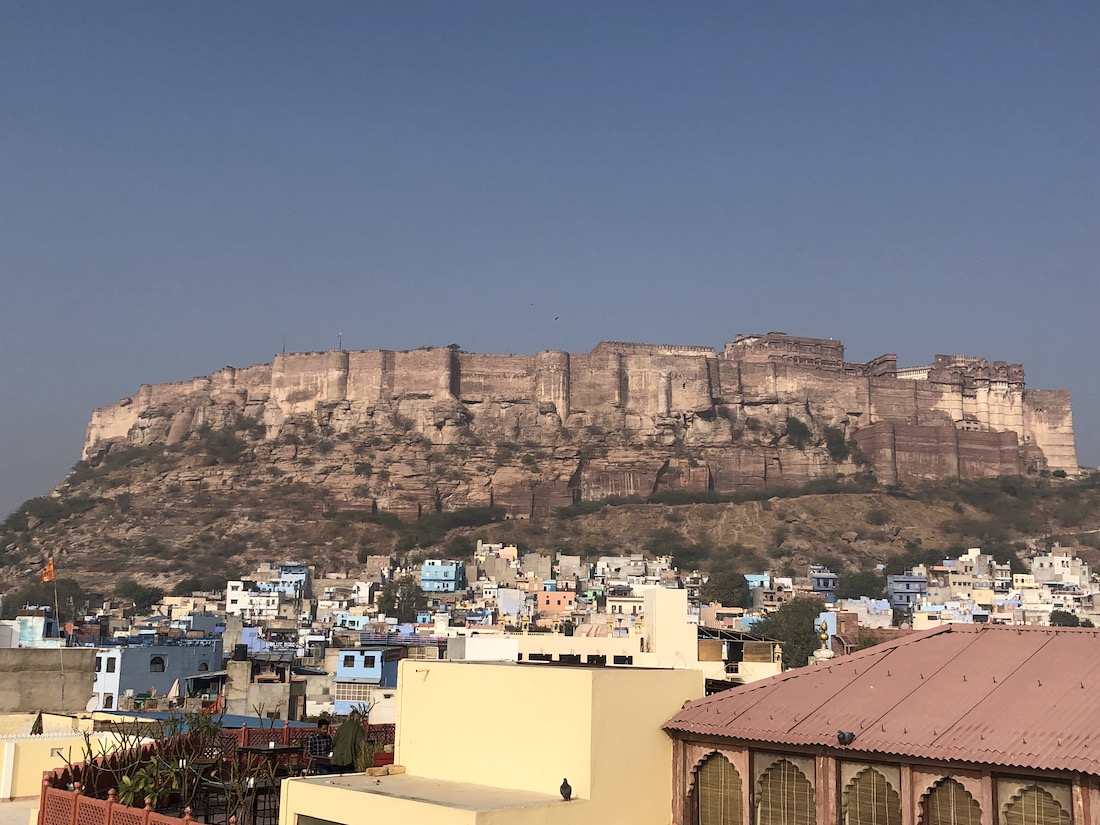Set on a massive volcanic outcrop 400ft above the city of Jodhpur, Mehrangarh Fort is unmissable. It’s one of India’s greatest monuments, an imposing complex of palaces and fortifications that would’ve impressed and intimidated the friends and enemies of the ruling family.
It was built in the 15th century by Rao Jodha, the then ruler of Mandore in the state we know today as Rajasthan. He also established the modern walled city of Jodhpur, which would become his capital. Today, the fort is Jodhpur’s greatest tourist attraction and its huge bulk is visible from pretty much everywhere in town. From the rooftop restaurant of our accommodation, the Pal Haveli, we were captivated by its towering, seemingly impenetrable battlements and seductive nighttime illuminations.
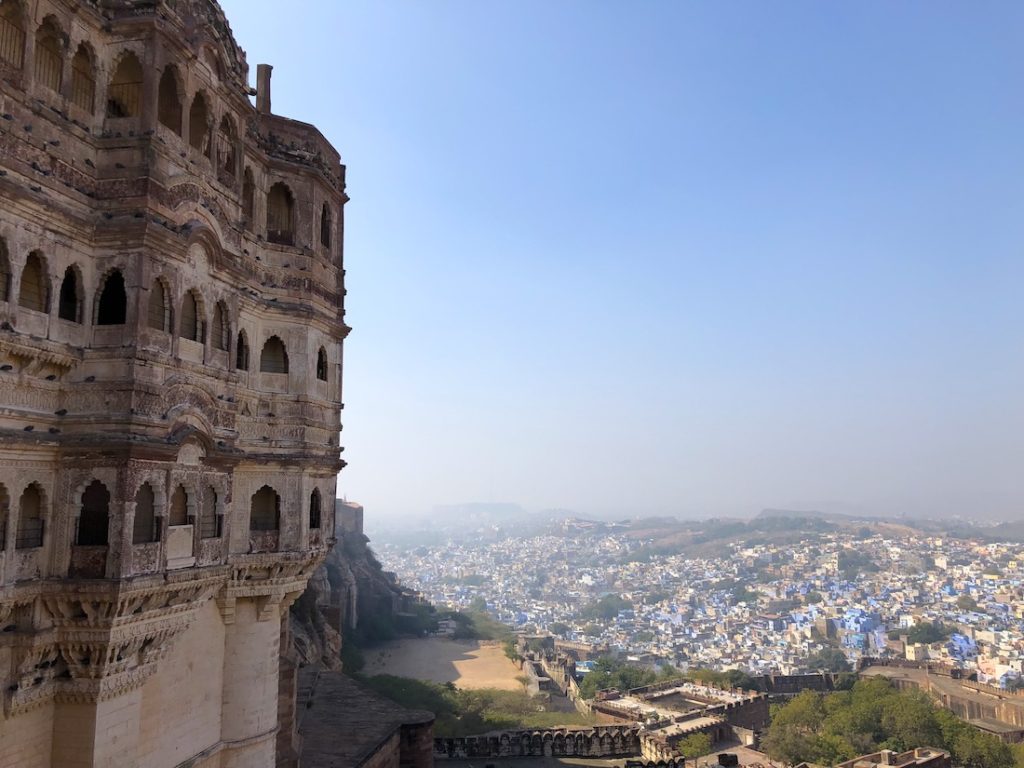
The road to the fort’s main gate took us through the back streets and narrow alleys of the old city, up steep flights of steps to Jai Pol, the Gate of Victory. The sky was a deep blue and it was surprisingly hot for a late January day. Beyond that main gate, which only dates from the 19th century, we paid our admission fees and caught the (very welcome) lift from the gate up to the battlements way above us, where historic cannons face an invisible enemy and the views are tremendous. Below us lay the old city and its countless flat-roofed buildings, many of them painted in the pastel blue that’s Jodhpur’s trademark.
I’d half expected Mehrangarh to be part fort and part village but in fact it’s mostly a collection of sumptious palaces, traditional fortifications and open spaces. A museum takes up much of the space, full of artworks, stunning costumes and textiles, menacing arms and armour and countless other colourful and well-preserved treasures from the royal collections. The information boards are particularly good (and the shop exceptional).
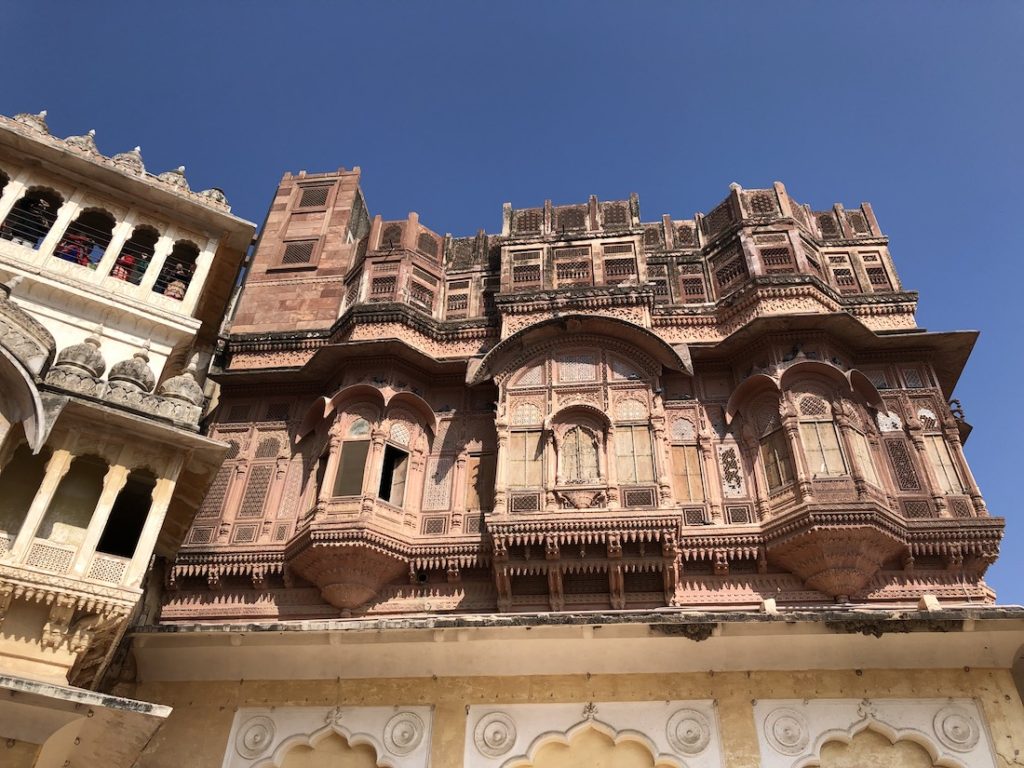
The palaces and their rooms vary in age – the royal family were in residence on and off until well into the 20th century – but the decoration is invariably exquisite. Finished in the red sandstone and marble that we found in such quantity in Delhi and Agra, the carving and fretwork on show inside and out is outstanding and must’ve taken an army of very talented craftsmen to complete. Windows boast stained glass or intricately carved screens, sometimes to ensure that the ruler’s women couldn’t be seen, and many of the grandest reception and private rooms are decorated with colourful glass and gems, mirrors to reflect the light and modest but comfy furniture. They are airy and spacious, which must’ve been welcome in the intense heat of summer.
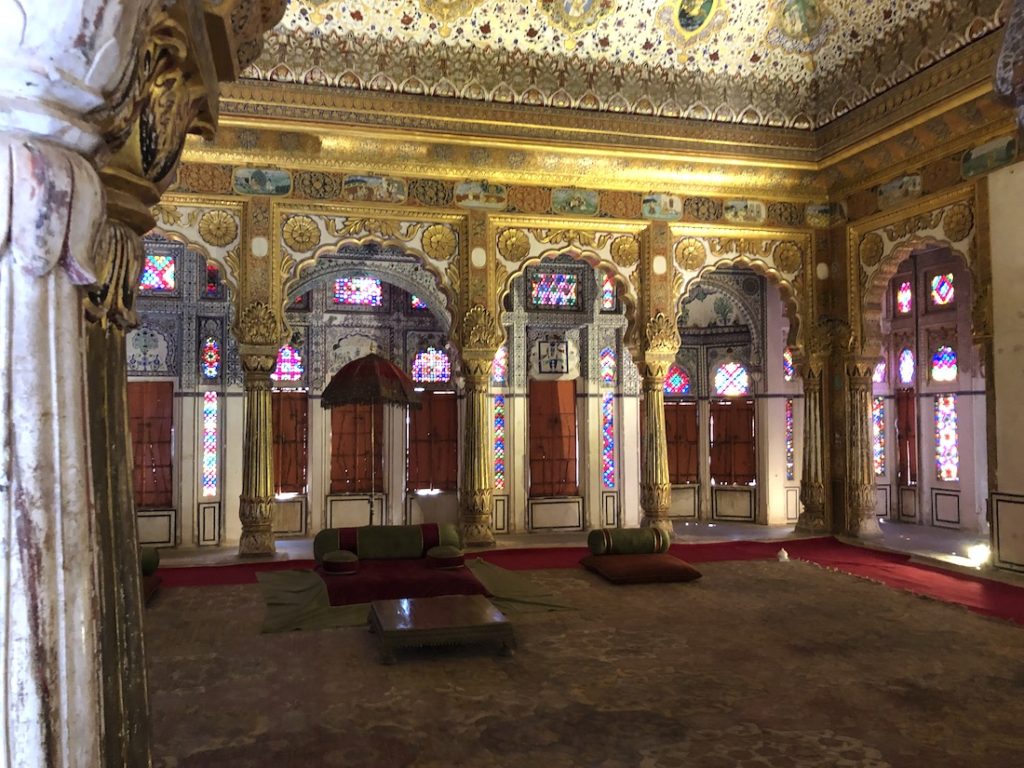
Outside, we walked along the battlements to the Chamunda Mata Temple, a picturesque spot that offered yet more marvellous views of the city below, and then stopped for tea in a pleasant, cool cafe. We walked back towards the main entrance via a number of other gates, some of which sport vicious spikes that were designed to deter the elephants used by invading forces. Another gate bore the scars of cannonballs. At Loha Pol there’s a gruesome reminder of how grim it could be to be a woman in old India. On the wall by the gate are the handprints of the ranis who in 1843 threw themselves onto the funeral pyre of their husband, Maharaja Man Singh.
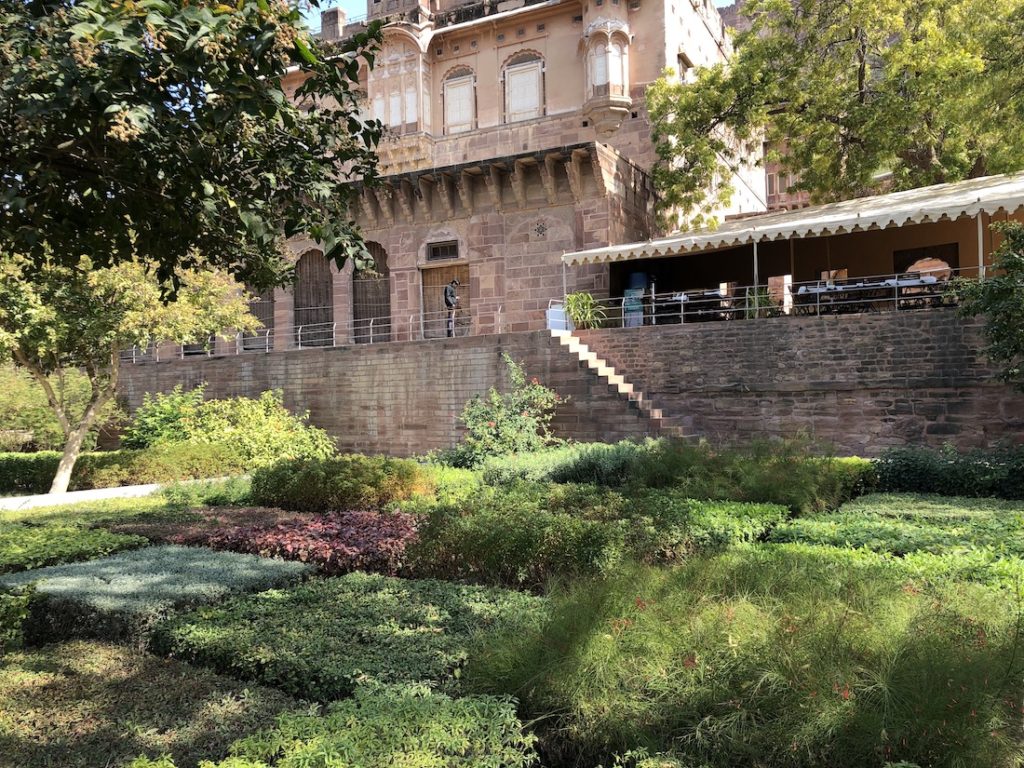
We continued on to the restored gardens of Chokhelao Bagh, which lie on the north-east flanks of the fortress. Beautifully green and almost deserted, they’re an oasis of calm compared to the tourist-filled palaces but they weren’t at their best in late January. Splashes of colour were few and far between but we had a wander round, located a deep well and followed the various irrigation channels that helped bring life to the garden.
There’s a zip line trail from the gardens to the old town below but we’re not that adventurous so we walked back to our haveli, in the shadow of the Mehrangarh giant. The fort had proven to be every bit as fascinating as its majestic profile had promised.

